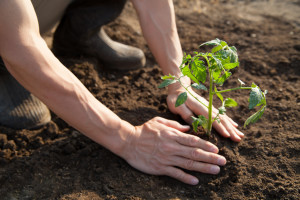
Although Frances Hodgson Burnett wouldn’t have used the term “horticulture therapy,” this is exactly what the book is about. Horticulture therapy utilizes the healing effect that occurs when people cultivate and work with plants.
Humans have always been connected with horticulture. Successful societies and cultures have come into being thanks to the plants that enable social structure, technology, and the arts. Only in recent times have most of us lived lives so removed from the cycles of nature. Horticultural therapy seeks to restore the many benefits that come from sinking your fingers into rich soil and watching living things grow thanks to your care and planning.
About Horticultural Therapy
Horticultural therapy goes way back. Egyptian doctors advised royals who were disturbed in their mind to wander the gardens for hours in order to find calm and balance. Modernly, this notion gained popularity during the 20th century in the aftermath of WWI and WWII, when wounded soldiers were encouraged to work in gardens as part of their rehabilitation.
Horticultural therapy can be achieved casually, or be part of a more focused, intense program. It can be as simple as walking in a garden, or as complex as building a garden and landscaping the grounds as a group. The most effective method is guided by a horticultural therapist. Horticultural therapists are accredited professionals with hours of experience & training, and validation from the American Horticultural Therapy Association.
Horticultural Therapy Gives a Sense of Achievement and Ownership
Horticulture therapy gains its strength from putting patients in a caregiver role. We are forced to step outside of ourselves and physically care and interact with other living things. With this ownership comes a sense of pride and connection. In gardening, we learn patience, and set ourselves simple, slow, and attainable goals. The satisfaction of seeing a blossom bloom thanks to your care and devotion can have long-lasting effects in patients recovering from addiction and seeking to regrow their own lives.
Horticultural Therapy Strengthens Connections
It’s a surprise to many that such a solitary-seeming, contemplative project as gardening can increase social skills and give patients a sense of connection. However, communion with nature is not to be underestimated. Patients find a restful, peaceful state and extend themselves to empathize with and nurture the plants in their care. In addition, gardening, especially a large garden project, is often a social activity. It requires several hands and cooperation in a group.
Horticultural Therapy Can Increase Mental and Physical Focus
Horticultural therapy was originally used for physical rehabilitation. For recovering patients, it gave them a simple, slow task that they’d be motivated to achieve. Gardening can increase dexterity, balance, and endurance, as well as cleansing the mind and allowing your thoughts and stresses to quit and rest, to be unconsciously sifted and rearranged.
Additionally, since with gardening, we learn new skills, it exercises our brains and activates new connections.
Consider utilizing mother nature’s resources in your journey of healing. Whether this is a mind-cleansing walk in the woods, or a tomato plant in your kitchen window, the benefits are more than fresh produce at harvest season.








